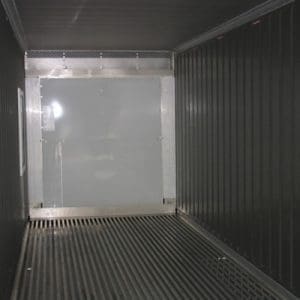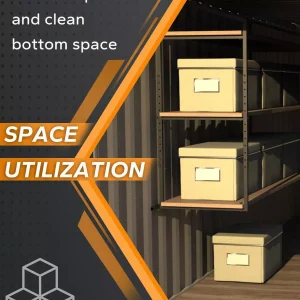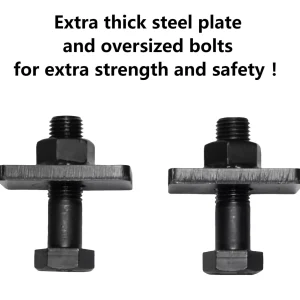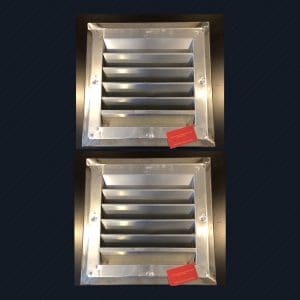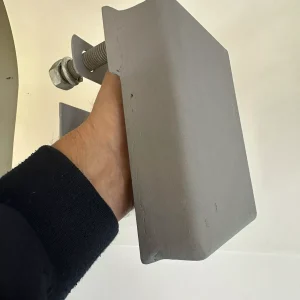Durability and Strength
Shipping containers are renowned for their robust construction. Made from corten steel, they are designed to withstand harsh weather conditions and the rigors of sea transport. This makes them ideal for underground bunker installations, where structural integrity is paramount. Using a shipping container for an underground bunker is advantageous because the strength of these containers comes from their ability to handle heavy loads and pressure, which is vital for underground installations. Additionally, their solid construction helps them resist impacts and potential environmental threats, ensuring long-term durability.
The design of shipping containers, which includes corrugated walls and reinforced corners, provides additional strength and stability. This design helps with stacking and transporting, and adds to the strength needed in a bunker. Their uniform shape and size make them suitable for modular construction. This allows many containers to connect quickly, helping expand the bunker’s capacity without losing strength.
Top rated products
-
40ft High Cube One Way Imported
Original price was: $5,000.00.$4,300.00Current price is: $4,300.00. -
4PACK Universal Cargo Shipping Container Shelving Shelf Brackets Powder Coated
Original price was: $300.00.$280.00Current price is: $280.00. -
8 x 6.5 Lug 9000LB Shipping Container Wheels, Bolt-on Spindle Kit NEW
Original price was: $450.00.$400.00Current price is: $400.00. -
TWO Cargo Container Vent – WELD ON – Conex Vents Helps Prevent Condensation !
$250.00 -
Bolt On Shipping Container Lock Box, Padlock, Welded on Bolts & Free Shipping
Original price was: $70.00.$65.00Current price is: $65.00.
Cost-Effectiveness
Shipping containers offer a more affordable alternative than traditional construction materials without compromising quality. Their modular nature allows for easy expansion and customization, providing flexibility in design and budget. The initial cost savings can be significant. This is especially true when you compare it to the costs of building a bunker with concrete or other common materials.
Furthermore, the speed of construction is greatly enhanced due to the prefabricated nature of shipping containers. This reduces labor costs and speeds up the turnaround time from concept to completion. The ability to change and adapt containers to specific needs means we can add more features. This allows for gradual investments and better financial planning.
Sustainability
Repurposing shipping containers for bunker construction is an environmentally friendly choice. It reduces waste by giving new life to used containers. It minimizes the need for new construction materials. By opting for repurposed containers, you contribute to recycling efforts and reduce the carbon footprint of manufacturing new materials.
Moreover, the sustainable aspect extends beyond the initial construction phase. Shipping containers can add energy-saving systems, including solar panels and rainwater collection. These features make them more eco-friendly. This matches the global sustainable living trend and can be a model for others thinking about similar projects.
Planning Your Underground Bunker
Location and Site Assessment
Selecting the right location is crucial for the success of your bunker project. Consider factors such as soil stability, drainage, and accessibility. A professional site assessment will help identify potential challenges and ensure the site is suitable for excavation and construction. The choice of location can significantly impact the overall cost and complexity of the project, influencing decisions regarding excavation depth and structural reinforcements needed.
Additionally, the site’s proximity to essential resources and services should be evaluated. Access to utilities, emergency services, and potential evacuation routes are crucial for long-term sustainability and safety. Analyzing environmental factors like flood zones and seismic activity will help reduce possible risks.
Shipping Container Bunker Plans
Developing detailed plans ensures your bunker meets all functional and safety requirements. Consult with architects or engineers experienced in underground construction to create comprehensive shipping container bunker plans. These plans should include structural reinforcements, ventilation systems, and emergency exits. A good plan will also include utilities like plumbing and electrical systems. This will help support how the bunker is used.
Incorporating technology into the planning phase can enhance the bunker’s functionality and safety. Advanced design software can simulate various scenarios, such as natural disasters or prolonged occupancy, to test the structure’s resilience. This proactive approach helps identify potential weaknesses and allows for adjustments before construction begins.
Permits and Regulations
Before commencing construction, obtaining the necessary permits and complying with local building codes and regulations is essential. This may involve submitting your plans for approval and undergoing inspections to meet safety standards. Navigating the regulatory landscape can be complex, as requirements vary significantly between jurisdictions. Engaging with local authorities early in planning can help streamline approvals and avoid potential legal issues.
Understanding and adhering to regulations ensures compliance and enhances the bunker’s safety and longevity. Regulations cover areas like fire safety, building strength, and environmental effects. These are vital for the protection of occupants. Staying informed about potential changes in legislation is also advisable, as they may affect future modifications or expansions.
Construction Process
Excavation and Foundation
The first step in the construction process is excavation. This involves digging a pit to accommodate the size and depth of your bunker. Good drainage is essential. This helps prevent water buildup, which can weaken your bunker. Hiring experienced contractors with specialized equipment can expedite this process and ensure precision in excavation.
After the excavation is done, pour a concrete foundation. This will create a stable base for the shipping containers. This foundation will also help evenly distribute the containers’ weight and prevent shifting over time. The foundation also secures the structure by buffering against ground movement and potential seismic activity.
Container Placement and Reinforcement
With the foundation, the shipping containers can be positioned according to your plans. It is critical to reinforce the containers to handle underground pressures. This may involve additional steel supports, welding, and bracing to enhance structural strength. Reinforcements ensure the containers can withstand lateral pressures from the surrounding soil and any additional loads from above.
Moreover, careful planning of container placement allows for strategic use of space and efficient layout design. The modular nature of containers provides flexibility in configuration Propane Tank, enabling the creation of interconnected rooms and corridors. Proper alignment and secure connections between containers are essential to maintain structural integrity and prevent potential leaks or shifts.
Waterproofing and Insulation
Waterproofing and insulation are essential to protect against moisture and temperature fluctuations. Use a suitable waterproof sealant on the outside of the containers, and add insulation to keep the inside comfortable. This will also help improve energy efficiency. Effective waterproofing prevents rust and corrosion, extending the containers’ lifespan and maintaining a safe living environment.
Insulation not only aids in temperature regulation but also contributes to soundproofing, an essential consideration for underground living. Selecting materials that offer thermal and acoustic insulation can enhance comfort and privacy. Additionally, integrating vapor barriers can further protect against condensation and moisture-related issues.
Ventilation and Utilities
Proper ventilation ensures a safe and habitable environment inside the bunker. Install a sound ventilation system to bring in fresh air and stop carbon dioxide from building up. Also, plan for utilities like electricity, plumbing, and communication systems to support long-term living. Advanced ventilation systems can be equipped with air filtration to improve air quality and protect against potential airborne contaminants.
Utility planning should include contingency measures, such as backup power sources and water purification systems, to ensure self-sufficiency. Renewable energy solutions, like solar panels, can reduce reliance on external power sources and enhance sustainability. A comprehensive utility plan will address both immediate needs and future scalability.
Interior Design and Customization
Shipping Container Bunker Interior
The interior design of your shipping container bunker should prioritize functionality and comfort. Consider the following elements:
- Layout: Organize the space efficiently to accommodate sleeping quarters, Storage, and living areas. A well-thought-out layout maximizes space utilization and ensures ease of movement within the bunker.
- Lighting: Use energy-efficient LED lighting to illuminate the interior without generating excessive heat. Strategically placed lighting can enhance the ambiance and create a welcoming atmosphere.
- Furnishings: Choose compact and multi-purpose furniture to maximize space utilization. Furniture with built-in Storage or modular capabilities can adapt to changing needs and improve functionality.
- Storage Solutions: Incorporate ample Storage for food, water, and essential supplies. Practical Storage solutions can include shelves, cabinets, and hidden compartments to keep the space organized and clutter-free.
Personalization and Aesthetics
Personalize your bunker to reflect your style and preferences. This can include custom finishes, color schemes, and decor. While looks are essential, ensure all changes meet safety standards and not weaken the bunker’s structure. Personal touches can transform the bunker from a purely functional space into a comfortable retreat.
Consider incorporating elements that enhance the psychological well-being of occupants, such as natural light simulations or decorative elements inspired by nature. These additions can create a more pleasant environment and reduce the psychological impact of extended periods underground. Balancing aesthetics with functionality ensures a harmonious and livable space.
Challenges and Considerations
Structural Challenges
Building an underground bunker with shipping containers presents unique structural challenges. The containers must be adequately reinforced to withstand the pressures of the surrounding earth. Consult with structural engineers to address potential issues and ensure the safety of your bunker. Engineers can provide insights into soil behavior and recommend appropriate reinforcement techniques tailored to your site conditions.
Additionally, integrating multiple containers may introduce structural complexities requiring expert analysis. Addressing potential issues during the planning phase can prevent costly repairs and modifications later. Regular inspections and maintenance of structural elements are essential to ensure long-term safety and reliability.
Moisture and Corrosion
Moisture infiltration can lead to corrosion and compromise the integrity of your bunker. Implement comprehensive waterproofing measures and conduct regular inspections to identify and address any signs of moisture-related damage. Early detection and remediation of moisture issues can prevent long-term damage and costly repairs.
Corrosion-resistant coatings and materials can provide additional protection against moisture-induced deterioration. Regular maintenance, including inspection of seals and joints, is crucial to maintaining the waterproofing system’s effectiveness. A proactive maintenance schedule ensures the bunker’s longevity, a 40ft shipping container for sale Victoria.
Long-Term Sustainability
Consider the long-term sustainability of your bunker, including maintenance and upkeep. Regularly assess the condition of the containers, ventilation systems, and utilities to ensure they remain in optimal working order. Long-term sustainability involves maintaining the physical structure and ensuring the continued functionality of systems and resources.
Creating a maintenance plan with regular checks and updates for technology and infrastructure can strengthen the bunker. Incorporating adaptable systems that can evolve with technological advancements ensures the bunker remains functional and efficient over time. Sustainable practices contribute to the overall viability and longevity of the underground space.
Conclusion
Building an underground bunker with shipping containers is a brilliant idea. It is a creative way to make a safe shelter. You can also customize it to fit your needs. By planning and carrying out each project phase, you can build a strong and lasting bunker that fits your needs.
A shipping container bunker is an excellent choice for emergency preparedness, Storage, or personal retreat. It is versatile and cost-effective for building an underground 120 gallon propane tank for sale. Using this approach gives you physical security and peace of mind. You can trust that you have a safe and strong place.

